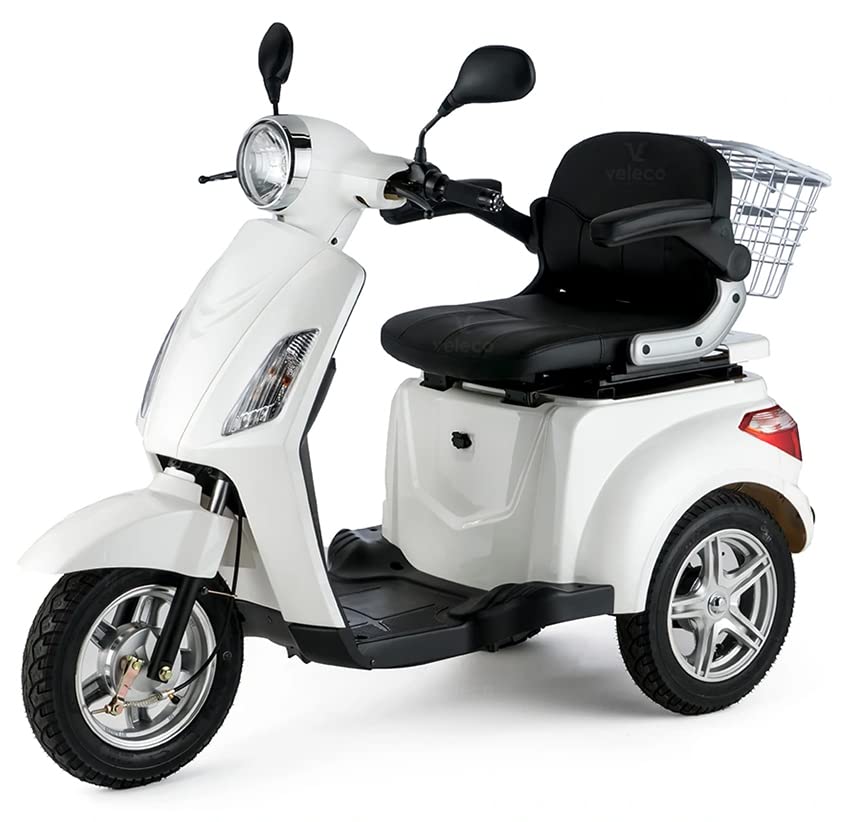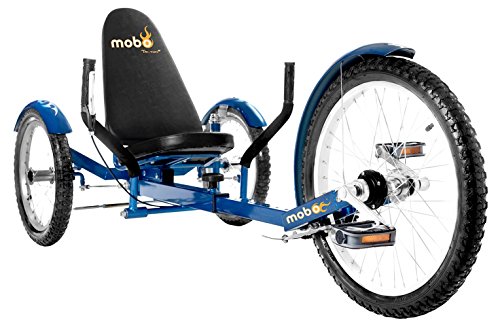What NOT To Do Within The Electric Micro-Mobility Industry
페이지 정보

본문
 NYCHA and EV Micro-Mobility
NYCHA and EV Micro-MobilityMicro-mobility with electric motors is a cost-effective solution to fill the first and last mile gap and complements public transport. NYCHA recognizes the importance of e-bikes, escooters and shared e-scooters for low-income residents.
 They also come with particular challenges. They must be monitored, tracked and managed.
They also come with particular challenges. They must be monitored, tracked and managed.Accessibility
four wheels electric mobility scooter micro-mobility is an ever-growing segment of the transportation sector. It offers significant opportunities for service and technology providers to revolutionize urban mobility and reduce congestion. The growth of this segment also presents challenges to the sector. These challenges include data gathering, safe battery implementation and planning charging infrastructure. These issues must be addressed to ensure electric micro-mobility can be utilized by all even those with disabilities.
Electric-powered scooters, bikes and other small, lightweight devices can allow users to travel further, faster, and in greater comfort than they would with traditional scooters and bikes. They can be used on sidewalks, city streets and bike paths as well as trails. They are powered by a lithium-ion battery and can travel up to 20 miles on a single charge. They can be purchased for personal use or rented out through an online sharing system.
A growing number of cities around the globe are integrating new E-scooter and ebike systems into their shared mobility networks. They have helped reduce their emissions, and improve their efficiency. These vehicles also offer new options for people who would have otherwise had to depend on cars to travel. The availability of these vehicles has increased accessibility to mobility services, and made it easier for communities to endure emergencies like the occurrence of weather disruptions and shortages of oil.
In recent years, the ebike market in the United States has grown rapidly, driven by technological advancements and demand from consumers. The market is dominated by a few companies, including Ninebot, Segway, and Yunxi which produce high-quality products that are affordable. These companies are working hard to increase their market share by implementing aggressive marketing strategies and partnerships.
Although ebikes, escooters electric scooters and other devices for micromobility consume relatively little electricity but they will increase the demand for energy on the grid. This will require significant investments in infrastructure and charging stations. Utilities can be prepared for the increase in demand by using smart grid technologies to study the behavior of consumers charging, launch demand-response plans, and provide incentives-based rates for EV charging.
The potential fire hazards that come with e-micromobility are still an issue despite their claims to promote economic equality and social equity. The increasing use of e-micromobility technology will also require more stringent rules to ensure the safety of residents. The e-micromobility policies of NYCHA are designed to avoid fires, injuries and other incidents while providing residents with a convenient and affordable alternative for transit.
Energy efficiency
Electric micro-mobility is more environmentally sustainable and requires less energy. Its battery is derived from renewable sources and emits no carbon dioxide. This is a major advantage for cities trying to achieve carbon-neutral goals and reduce air pollution. In addition, the vehicles require less space to park and are quieter than cars.
If it's an e-scooter or an e-bike, or even a monowheel, these new vehicles are revolutionizing the way people move through urban areas. Their growing popularity has prompted city governments to consider their impact on sustainable mobility. Electric micro-mobility, depending on the model and power source, can cut down on traffic congestion, improve the quality of air, and save fuel. However the new vehicles could also pose a threat to the existing infrastructure and laws.
The most popular micromobility devices are e-scooters. They are small and electrically powered scooters that can be rented through smartphone apps. These devices are capable of travelling at speeds of that exceed 30 km/h and can be utilized on sidewalks, bicycle paths, or roads. Other micromobility options include ebikes, rickshaws, and pedicabs.
These new transportation alternatives are gaining popularity and the modal portion of EMM is expected to grow by 5-10 percent in Europe by 2030. Researchers need to better comprehend EMM use and its determinants, including contextual and individual factors. This review examines the current state of knowledge about the factors that influence EMM use and identifies future research goals.
Currently, there are many barriers to the widespread adoption of electric micro-mobility. The absence of a charging infrastructure for e scooters and other devices is one issue. Another concern is safety. Unless these issues are addressed the potential benefits of this form of transportation may be diminished.
In the aftermath, some cities are trying to find ways to accommodate these vehicles without harming the integrity of roads and bridges. One solution is to construct dedicated lanes. In this case the driver of the vehicle is required to adhere to strict traffic rules and adhere to speed limits. The device also needs to be fitted with specialized technology in order to function properly. Batteries must be constructed to be in line with international standards and replaced often.
Environmental impact
Electric micro-mobility offers a variety of environmental benefits, including less energy consumption and emission. However, the devices need electricity to function, and their use may increase peak demand. Utilities are able to mitigate the impact of this by analyzing consumers' charging behavior and introducing demand-response programs. They can also offer customer retail electricity net-metering and incentive-based rate plans for charging EVs. Additionally, the growth of e-bike and e-scooter services opens up new opportunities for investment and business models that benefit utilities.
The life cycle assessment is an essential aspect to consider when assessing the environmental impact shared 3 wheel electric mobility scooters (http://enbbs.instrustar.Com) micro-mobility. LCA is a comprehensive evaluation of the environmental burden that comes with shared mobile electric scooters micro-mobility by taking into consideration a variety of factors including raw-material extraction and manufacturing, energy consumption, and end-of-life management. Most studies employed the cumulative energy demand method to quantify the primary energy consumption, whereas others applied other impact-assessment methods, such as ReCiPe or IPCC.
The degree of sensitivity of GWP estimates from the life-cycle assessment of EMM is dependent on the duration of the vehicle as well as the battery material and manufacturer, and the power source mix used for charging. The sensitivity of the rebalancing phase is also crucial and is the reason for nearly half of the review studies examining scenarios for rebalancing to assess its impact on GWP estimates. Many of the rebalancing scenarios have minimal impacts, especially when the vehicles are pulled by low carbon servicing vehicles, such as e-cargo bikes and evans or when service distances are reduced.
A wide range of micromobility vehicles have been developed, but there are still several barriers to the growth of this industry. There are numerous barriers to the development of this business, including the absence of policies that encourage shared micromobility, as well as concerns about the safety and reliability e-bikes. While the market is rapidly expanding, several private and public entities have been working to address these issues. Some of these initiatives include the creation of shared bike and scooter systems that provide access to people who would otherwise not be able to use traditional bikes or scooters. Other initiatives include the development of mobility-as-a-service platforms, which consolidate a variety of transportation options into one convenient service.
Safety
Micro-mobility has gained tremendous popularity in the last few years. However there is much work to be done. While the new technology provides numerous benefits, it also poses many safety issues. The most frequent dangers associated with micro-mobility include batteries that explode, accidents, and crashes. However, a variety best practices can reduce these risks. To help reduce the risk of these incidents, NYCHA has established a set of guidelines that encourage the safe use of e-micromobility devices within its communities. Additionally, NYCHA has established a set of best portable electric mobility scooter practices for charging the batteries of these devices. This will help reduce the risk of fires that can be particularly hazardous for seniors and children.
The main safety concern with electric micromobility is the risk of battery fires. These devices are powered with lithium-ion batteries, which can cause serious injuries or even death if they catch on fire. Lithium-ion batteries are difficult to extinguish as they are extremely flammable, emit toxic gasses and are highly flammable. To avoid this you must follow the recommended charging techniques and buy high-quality batteries made by reputable brands. Additionally, it is essential to purchase a device that has been UL (Underwriters Laboratories) tested and certified.
Another security concern is that the regulatory and administrative structures have only just begun to monitor and recognize incidents involving e-scooters and e-bikes. Police incident reports and hospital emergency rooms only began collecting searchable data on e-scooterand ebike-related injuries as of 2023. This leaves a gaping space in the security and legal information.
Fortunately, many organizations are working on addressing these challenges by creating an environment that provides an equitable and safe method of mobility for all residents. They are forming cross-departmental coordination teams and conducting pilot studies to discover new ways to encourage micromobility. This includes community involvement, e-scooter ambassador programs, and training for riders. They are also exploring the possibility of developing new funding streams and establishing protocols for injury reporting.
The introduction of electric micromobility has reshaped traditional modes of transportation. However, it is an excellent way to increase mobility and accessibility for those who have disabilities. These vehicles are a good alternative to walking or using a wheelchair. They can also assist in bridging the first and last mile gap. These vehicles are also a great option for older adults who may not be able walk or drive for long distances.
- 이전글5 Laws That Will Help The Vintage Leather Couch Industry 24.12.17
- 다음글The 10 Scariest Things About Power Tools Stores Near Me 24.12.17
댓글목록
등록된 댓글이 없습니다.